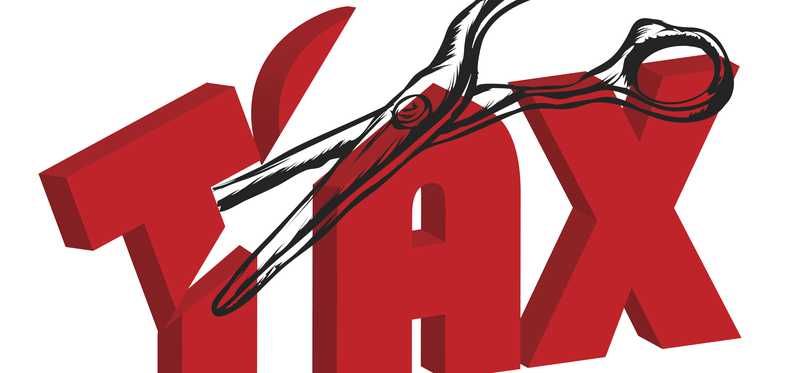9 Moneymaking Tips Even Seasoned Investors Can Use

9 Moneymaking Tips Even Seasoned Investors Can Use
Brush up on these tried-and-true principles
Managing your money can be an incredibly fulfilling lifelong endeavor. Whether you’re just starting on that journey or have decades of experience under your belt, there are certain foundational principles that can position you well for long-term success with your investments.
These nine moneymaking tips hold true no matter where you are along that path. If you’re a new investor, they can provide you guideposts as you’re getting started. If you’ve been at it a while, it’s probably a good idea to reacquaint yourself with them, particularly this long into a bull market. After the last decade’s run, it’s easy to forget that stocks can also go down, but with these principles in place, you can improve your chances of making it through the next time the market turns sour.
Previous
Next

1. Give every dollar a purpose
When you invest, you’re putting money aside today to help you cover a goal you have for some time in the future. The better you understand your goals and the more they align with your personal priorities, the better your chances of actually achieving them with the money you’re setting aside.
After all, it’s easy to see a pot of money with your name on it as cash you have available to spend right now. It’s a lot harder to take money you have labeled as “my kids’ college fund” and spend it on a vacation. Plus, when you separate your investments by the goals you have for that money, each goal will have a smaller total than your overall net worth. That can help keep you focused on meeting each of your individual goals instead of getting distracted by the overall total across your accounts.
Previous
Next

2. Invest based on when you’ll need the money
The stock market has been an incredible creator of wealth over the long term, but stocks don’t always move up. The best way to manage through the day to day uncertainty in the stock market is to only invest in stocks for money you’re not planning to spend for at least the next five years.
For your shorter term goals, use tools like cash, money market funds, or duration-matched investment grade bonds. Sure, you’re giving up potential long term returns for the higher certainty that the money will be there. On the flip side, you’re also allowing the rest of your money to remain invested in stocks even if the market is moving against you when you need to spend some of your stash on that goal.
Previous
Next

3. Keep your costs down
Over the long haul, the stock market has delivered returns near a 10% annualized pace. It’s not reasonable to expect you’ll get higher returns than that, particularly if you’re paying heavy costs along the way. $5,500 a year -- the amount people under age 50 can currently contribute to an IRA -- compounded at 10% for 30 years winds up being worth just over $1 million. That same amount invested for the same amount of time at an 8% compounding rate winds up being worth less than $700,000.
That’s a loss of more than 30% of your potential hard earned money, simply by earning 2% less on your investments over time. If you’re paying heavy sales commissions to have your money invested in funds with high fees, high internal costs, and high churn, you could easily be giving up 2% of your returns each year.
Particularly these days when index funds are offering ultra-low to even no-cost ways of investing in a broad market benchmark, there’s no excuse for paying a lot of money to get below market returns.
ALSO READ: Will Inflation Cause the Next Stock Market Crash?
Previous
Next

4. Make use of tax advantaged accounts to meet specific goals
One of the costs you’ll face as an investor is taxes. You’ll pay taxes on your capital gains, taxes on your dividends, and depending on your overall income level, your investment successes may even force you to pay taxes on your Social Security benefits. Yet using tax-advantaged accounts for your key financial goals can help you reduce your exposure to many of those taxes.
Three of the biggest financial goals most people have are their retirement, paying for healthcare needs (particularly later in life), and helping with their children’s educations. You can use tax-advantaged accounts to save for all three of those goals, helping reduce the tax costs of reaching them.
For retirement, there are IRAs, 401(k)s, and other employer-sponsored plans. Money you put in those plans compounds tax deferred while in the plan and may give you either a tax deduction when you contribute it or be eligible for tax free withdrawals in retirement.
For healthcare needs, people with High Deductible Health Insurance plans can invest in Health Savings Accounts. Those accounts offer tax-deductible contributions, grow tax deferred while in the plan, and can be withdrawn completely tax free at any time to cover eligible healthcare related expenses.
For education expenses, the largest tax-advantaged account available to most people is a 529 plan. Money in those accounts compounds tax deferred, cash can be withdrawn completely tax free for eligible education expenses, and you may receive a state tax deduction for contributing to one.
Previous
Next

5. Diversify, but don’t di-worse-ify
Proper diversification is the closest thing to a free lunch available to ordinary investors. Done well, diversification can lower your risk of a catastrophic loss without reducing your overall expected returns. After all, there have been over 22,000 corporate bankruptcy filings in the first seven months of 2018. If the only investment you own goes bankrupt, you could be in a world of hurt, but if a company going bankrupt only represents a small portion of your portfolio, it’s much easier for you to recover.
Despite those benefits, diversification can turn into di-worse-ification when investors put the need to diversify ahead of the need to find reasonable investments. A good rule to live by is to not buy an investment just to help your portfolio diversify. Rather, use diversification as a tie breaker when considering between investments that each appear to be reasonable on their own.
Previous
Next

6. Be tax-smart, but don’t let tax concerns destroy your overall returns
If you own an investment for at least a year and a day, it qualifies for a lower long-term capital gains tax rate than if you sell it after holding it for less time. Likewise, if you own a qualifying dividend paying stock for more than 60 days around its dividend payment, that dividend is taxed at a lower rate for you. Perhaps most importantly, individual investors are not charged capital gains taxes on their investments until they close out the investment for a gain, which is an advantage for those with a long time frame.
Still, remember that paying a tax on a successful investment is a better option than not paying a tax on an investment that ultimately goes sour -- particularly if you had a chance to sell for a gain earlier. If you have a good reason to sell an investment, go ahead and sell it even if you have to pay tax on the sale. As the saying goes, “you’ll never go broke taking a profit,” and if you want to keep your money invested, you can always look for a different pick that looks more attractive once you receive your sale proceeds.
Previous
Next

7. Once you win the game, it’s okay to stop playing
If you’re investing for specific goals, once you’ve reached a goal, it’s a great idea to consider lowering your risk profile on the money you’ve got associated for that goal. For instance, if you’ve been diligently saving for retirement and find your plan fully funded before you’re ready to retire, go ahead and boost your bond allocation sooner than you originally anticipated. In addition, go ahead and put the new money you otherwise would have put towards your retirement plan towards your next big priority.
Successful investing isn’t about dying with the largest possible nest egg. It’s about funding your top life priorities so that you and your family can maximize the use of the money you’re socking away. By lowering your risk profile once you’ve hit your target, you increase the chances that target stays hit if the market moves against you. By shifting your new cash towards your next biggest priority, you improve the total practical usefulness of your money.
Previous
Next

8. Remember, stocks also go down
This deep into the longest bull market run in history, it’s easy to forget that the stock market doesn’t always go up. If your financial plan depends on the stock market always providing 8% to 10% gains every year, you’re setting yourself up for a world of hurt when you need to start withdrawing money to pay for your costs.
In addition -- and relevant even if your retirement is decades away -- it can be incredibly difficult to keep funneling money towards your investments when the market is moving against you. Indeed, it often feels like you’re throwing good money after bad. Just remember that fortunes aren’t made in bull markets, and your ability to rationally buy strong businesses when they’re on sale will go a long way towards determining your ultimate financial fate.
Previous
Next

9. Don’t let today’s bad news distract you from long-term wealth creation
Between 1928 and 2017, the stock market has delivered returns that compounded at better than a 9.6% annualized rate. That’s enough to have turned $100 a month invested over that time period into a fortune worth over $62,000,000. Yet during that time period, the news headlines included things like:
- The 1929 Black Tuesday market crash
- The Great Depression
- World War II
- The rise of the iron curtain
- The Korean War
- The Vietnam War
- The Cuban Missile Crisis
- The OPEC oil embargo
- The Three Mile Island, Chernobyl, and Fukushima
nuclear incidents
- AIDS
- The 1987 Black Monday market crash
- The dot.com market crash
- The 2008 financial crisis
While any given day, week, month, or even year can be rocky in the stock market, in the long run, the market has been an incredible wealth generating machine, despite those world-changing headlines. When you invest in stocks, remember that you’re investing in the long-run potential of the companies behind those stocks, despite the short term risks from bad news stories. Keep that long term view in mind when making investing decisions, and you’ll increase your chances of winding up fine.
ALSO READ: 10 Events That Could Cause the Next Stock Market Crash
Previous
Next

Investing can be simple, but it’s not always easy
The simplest long term investing strategy with a strong track record out there is to dollar cost average into an index fund every payday. If you have access to a 401(k) or similar retirement plan through work, you can even set it up one time, have it repeat automatically, and never have to think of it again.
Despite how effective that simple strategy can be, it’s not always easy to follow it in practice. Keep these nine moneymaking tips in mind as life happens, the market moves against you, and the news headlines look grim, and you can improve your odds of ultimate investing success.
The Motley Fool has a disclosure policy.
Previous
Next
Invest Smarter with The Motley Fool
Join Over Half a Million Premium Members Receiving…
- New Stock Picks Each Month
- Detailed Analysis of Companies
- Model Portfolios
- Live Streaming During Market Hours
- And Much More
READ MORE
HOW THE MOTLEY FOOL CAN HELP YOU
-
Premium Investing Guidance
Market beating stocks from our award-winning service
-
The Daily Upside Newsletter
Investment news and high-quality insights delivered straight to your inbox
-
Get Started Investing
You can do it. Successful investing in just a few steps
-
Win at Retirement
Secrets and strategies for the post-work life you want.
-
Find a Broker
Find the right brokerage account for you.
-
Listen to our Podcasts
Hear our experts take on stocks, the market, and how to invest.
Premium Investing Services
Invest better with The Motley Fool. Get stock recommendations, portfolio guidance, and more from The Motley Fool's premium services.